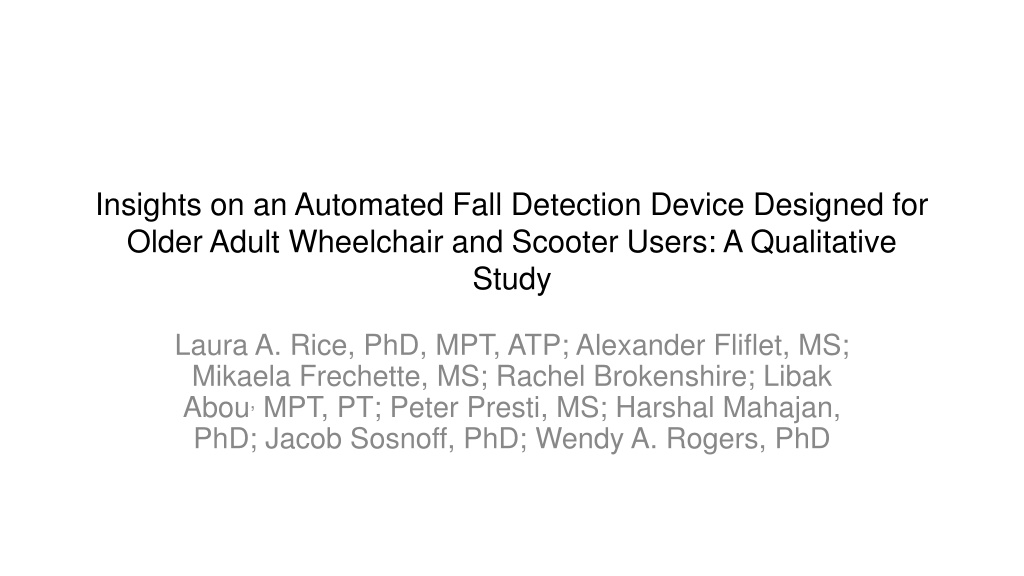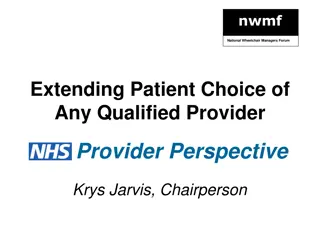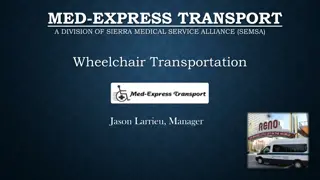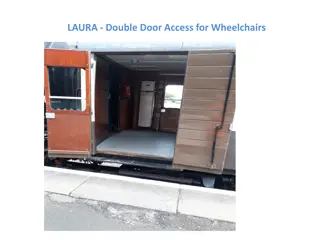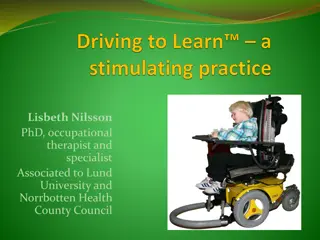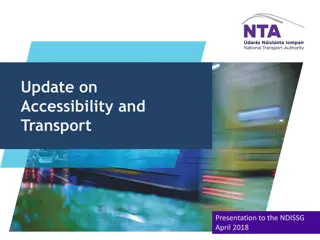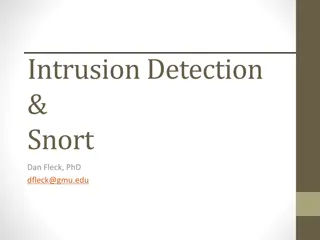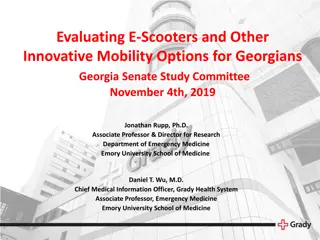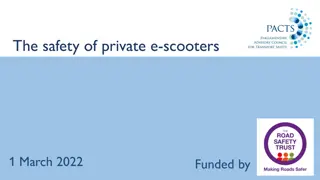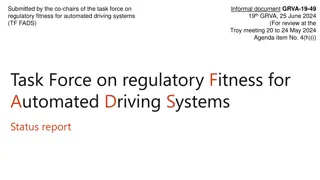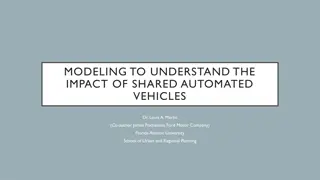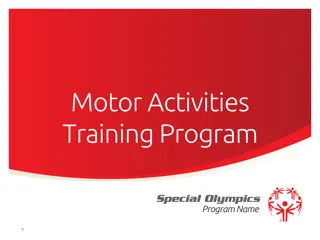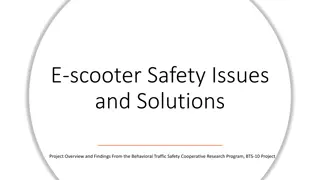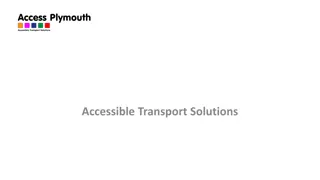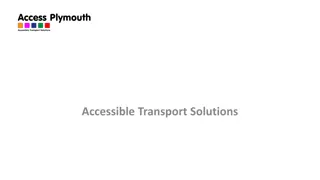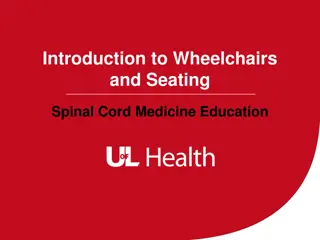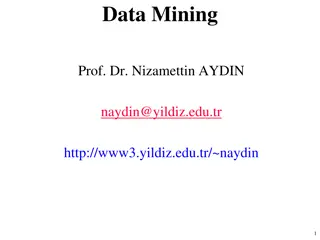Insights on Automated Fall Detection for Wheelchair and Scooter Users
The study delves into the challenges faced by older adults who use wheelchairs and scooters, emphasizing the need for improved fall detection devices. It highlights the frequency of falls in this demographic and the aftermath and implications of such incidents. The session outlines the limitations of current devices, preferences for automated systems, and the importance of comprehensive fall management strategies to mitigate risks and enhance post-fall care.
Uploaded on Sep 09, 2024 | 0 Views
Download Presentation

Please find below an Image/Link to download the presentation.
The content on the website is provided AS IS for your information and personal use only. It may not be sold, licensed, or shared on other websites without obtaining consent from the author. Download presentation by click this link. If you encounter any issues during the download, it is possible that the publisher has removed the file from their server.
E N D
Presentation Transcript
Insights on an Automated Fall Detection Device Designed for Older Adult Wheelchair and Scooter Users: A Qualitative Study Laura A. Rice, PhD, MPT, ATP; Alexander Fliflet, MS; Mikaela Frechette, MS; Rachel Brokenshire; Libak Abou,MPT, PT; Peter Presti, MS; Harshal Mahajan, PhD; Jacob Sosnoff, PhD; Wendy A. Rogers, PhD
Session Outline Discuss problems associated with falls among individuals who use wheelchairs and scooters Understand limitations of fall detection devices on the market Become aware of preferences for an automated fall detection device expressed by individuals who use wheelchairs or scooters.
Fall Frequency Individuals who use Wheelchairs or Scooters ~60% have experienced a fall over their lifetime Multiple Sclerosis: 75% report at least 1 falls/6 months Spinal Cord Injury: 69% report at least 1 fall/12 months 68% of fatal wheelchair accidents are from falls Ambulatory older adults 30-40% fall at least once per year
Fall Prevention First line of defense Limitations Limited peer reviewed fall management programs Total prevention is not possible
Significance Comprehensive Fall Management Fall Risk Management Interventions Identification of Fall Risk Post Fall Management
Aftermath of falls Injury Delayed Initial Recovery/Long lie period Recovery (getting up) Fear of falling/Limitations on Participation
Aftermath of falls Injury Delayed Initial Recovery/Long lie period Recovery (getting up) Fear of falling/Limitations on Participation
Lie Time Period of time that a person is on the ground after a fall occurred Long lie (>1 hour on the floor) is predictive of: Future injurious falls Decline in performance of ADLs Increased hospital admissions Admission to long term care facilities Lie time among wheelchair users n = 39 wheelchair users Average lie time = 9 minutes, Range: 1 45 minutes >10 min = n = 10
Challenges with recovery Needing assistance with recovery is associated with: Poor quality of life Serious injuries Death Assisted recovery: 77.5% of wheelchair users need assistance to recover (n = 40) 50% of ambulatory older adults Manual wheelchair users who required assistance to recover had lower reports of community participation (n = 20) Bloch, 2012; Rice, 2018 & 2019
Fear of falling Fear of falling: N = 68 wheelchair users 61% reported fear of falling 51% stopped doing activities due to fear of falling Relationship found between fear of falling: Quality of life (physical and psychological health) Control over participation Sung, 2019
Automated Fall Detection Devices Limitations in automatic notification Designed for ambulatory population Falls from wheelchairs are distinct Apple watch (Series 5) Detected 14/300 falls from a wheelchair (4.7%) Forward falls: 9/14 falls Detection may be influenced by: height impact force lower limb function fall direction Abou, 2021
Limitations of current fall detection devices Limited use of self-triggering devices Don t want friends/family notified Obtrusive Limitations on who is notified
Development Goals Development of a product that can: Reliably automatically summon assistance in the event of a fall End-user is able to select who is called Non-device specific Preserves dignity
Study Progress Phase I: Measure fall acceleration patterns to detection fall event from a wheelchair Phase II: Develop a prototype of a customizable fall detection system to identify a fall event and notify caregivers/emergency professional Get feedback from participants on preferences of device
Participant Preferences Semi-structured interviews performed with individuals who use a wheelchair and scooter Quantitative assessments on technology acceptance Participants n = 15 Variety of health conditions Age: 68 5 year Use of wheelchair or scooter for 23 17 years Fallen 3 3 times in the past 12 months (range 0-12) Rice, 2021
Perceived Usefulness Agreed or strongly agreed with the following statements: Increase ability to recover from a fall Decrease lie time after a fall Decrease fear of falling Useful inside or outside place of residence
Current use of a fall detection device Helped to recover when alone When my significant other was in the hospital So yes, I wore the button (Participant 13) Challenges expressed in finding something that fit needs Well, I've not found something that would fit my needs.. (Participant 11)
Preferred Features Look of the device: conservative, sleek, and small design If it looks out of normal and people would talk about it or what it was, I think it should look high tech. (Participant 10) Form: Watch with wireless charging Concerns noted about don/doffing of device I prefer stretch bands where they slip over your wrist. I do not have very good dexterity in my hands (Participant 4)
Preferred Features Who to notify in the event of an emergency: Emergency services Family members Care partners Friends Would like to easily change who is notified My significant other and my caregiver... I would like it to be able to be changed, like two different caregivers so that you could adjust it. (Participant 1)
Preferred Features How to send a notification that an emergency has occurred Short message service (SMS) or call "A phone call. That would be a certain, as people don't always really read their texts." (Participant 8) Would like to be notified that help is on the way Some kind of audible alert that you can hear, might give you a message that you know it is working properly (Participant 4)
Preferred Features Would like the ability to disable a notified (false alarm) A false alert definitely can happen, so I definitely want it but if you hit your head, you don t know what state you re going to be in so, not too long. Maybe five minutes [to cancel it]. (Participant 3)
Discussion Indicated the need for an automated fall detection device to facilitate recovery from a fall. Challenges with previous fall detection devices noted Specific design requirements are needed to facilitate ongoing use.
Next Steps Build the device Community testing (Dec. 2021)
Thank you!! ricela@Illinois.edu
